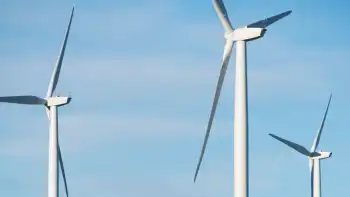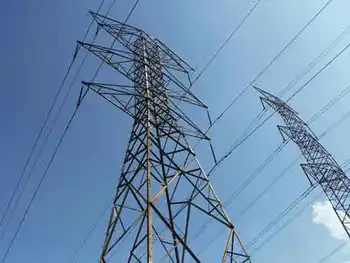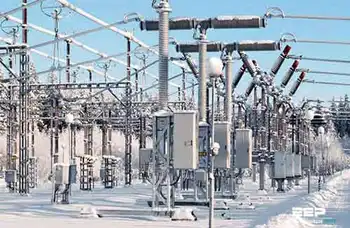Power struggle: wind versus sun hotly debated
By Arkansas Democrat-Gazette
Arc Flash Training CSA Z462 - Electrical Safety Essentials
Our customized live online or in‑person group training can be delivered to your staff at your location.

- Live Online
- 6 hours Instructor-led
- Group Training Available
In the fable, sun wins. But in real-life policy questions over solar power and wind energy — over which provides the more cost-effective source of clean energy — it appears that wind has sun on the ropes. At least for the moment.
Both provide an environmentally friendly alternative to coal- and gas-fired electricity, and both emit none of the greenhouse gases associated with global warming. But solar power — despite several advantages over wind — is much more expensive, say experts.
“You get more bang for your buck from wind energy than from solar energy,” said Ryan Wiser, who leads renewable-energy research at the Lawrence Berkeley National Laboratory in California.
As the public expresses growing concern over global warming and rising utility bills, consumer advocates say itÂ’s more important than ever to balance the costs and benefits of wind power, solar power and other forms of renewable energy.
It’s not a question of whether the United States should pursue clean-air strategies — but rather which ones, and at what cost. Who stands to save money and who stands to pay more? Is nuclear power part of the solution?
In Texas, which recently leapfrogged over California to become the largest wind-power-generating state in the nation, the solar-power industry already lags far behind wind. And many more wind turbines are expected soon thanks to an aggressive and expensive plan to build more transmission lines.
But California leads the nation in solar power and is pursuing even more through its Million Solar Roof Plan, which was signed into law by Republican Gov. Arnold Schwarzenegger in 2006.
A look at the Texas and California programs provides points for comparison.
In California, the plan is to provide new publicly funded rebates for those who install solar panels at their homes and businesses. California is charging ratepayers about $3.3 billion — or about $86 per Californian — to finance the program. That amounts to about $1 per month on a typical bill over a period of years, according to a representative of the California Public Utilities Commission.
Policymakers say the rebates will increase California solar power output by 3,000 megawatts by 2018 — or enough new power for about 1.5 million homes, under normal conditions.
In comparison, the Competitive Renewable Energy Zone program in Texas will lead to the construction of $3 billion to $6.4 billion in transmission lines — all for wind power, and all constructed at utility ratepayers’ expense. That equates to anywhere from $150 to $320 for every Texan served by the state’s power grid, although the exact impact on home bills won’t be known until action later this year by the Texas Public Utility Commission. The cost will likely be spread over a number of years.
Under the Texas plan, the state hopes to encourage electric companies to build an additional 5,150 megawatts to 17,950 megawatts of wind turbines — or enough for 2.6 million to 9 million homes.
Bottom line: Under the California plan, the development of an additional megawatt of solar power would cost ratepayers $1.1 million. Under the Texas plan, an additional megawatt would cost $356,000 to $573,000.
But experts say solar power enjoys several advantages over wind — advantages that increases the value of sun power for those paying the bills.
For instance, because the wind typically stops blowing during the middle of hot summer days, Texas wonÂ’t get much use from those expensive new transmission lines when it needs the power the most. ThatÂ’s not a problem with solar.
Wind also presents tough — and sometimes expensive — technical challenges. Because wind turbines will stop spinning without a moment’s notice, engineers at the power grid must sometimes have more expensive standby power ready and waiting.
And finally thereÂ’s the question of power lines themselves. With wind power, ratepayers get stuck with the enormous price tag. This cost is avoided with rooftop solar power and can be minimized with other sorts of solar energy.
Wind-power advocates argue that concerns over the transmission costs are overblown. They say that savings from wind power — which has zero fuel costs — quickly offset the extra expense.
But some skeptics say that under the deregulated electricity system in Texas, thereÂ’s not a guarantee that ratepayers will see much of those savings. Instead, much of it may end up padding the bottom line of electric companies.
In California, by contrast, those who invest in solar panels can see savings reflected directly on their bills. Those savings — when combined with federal tax breaks and the new California rebates — can allow homeowners to recoup the cost of their investment in panels in a decade or so, said Marcel Hawiger, staff attorney for the Utility Reform Network, a California-based consumer advocacy group.
After that, the solar investment can lead to real reductions in home bills, he said.
Despite the advantages, Hawiger still questions whether that state’s solar initiative is a good deal for Californians. He calls the $3.3 billion addition to home rates one of “the most regressive forms of taxation” and notes that most of those installing the panels are businesses, not residences.
“Our residential customers are subsidizing commercial customers who are already getting a much better tax break for solar installation,” he said.
Despite the potentially high transmission costs and other disadvantages, wind power still remains much cheaper to produce than solar, said Severin Borenstein, director of the University of California Energy Institute.
He estimated solar power’s long-run average production cost at 25 cents to 30 cents per kilowatt hour — not including government subsidies and tax credits — as compared to 5 cents to 9 cents for wind power.
“Solar is four times as expensive than wind — or at least three times as expensive — even when you count transmission,” he said.
Hawiger said the most cost-effective way of reducing greenhouse gases remains energy-conservation efforts, and the adoption and enforcement of strict building codes that ensure that new homes are energy-efficient.











